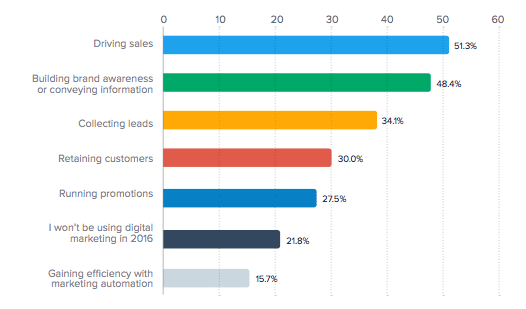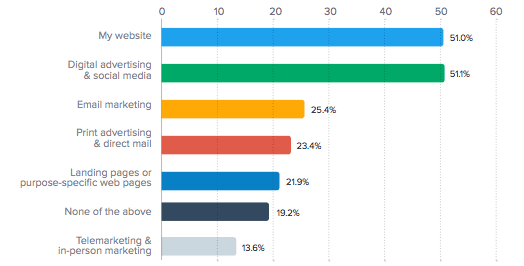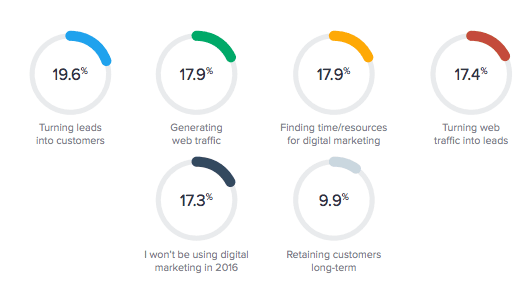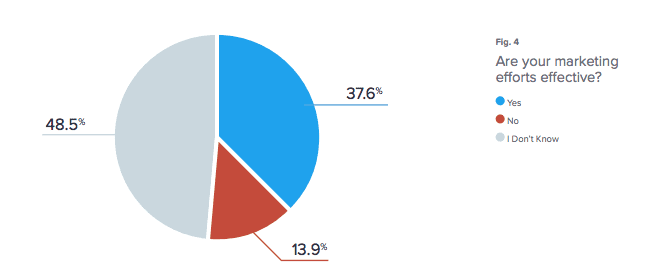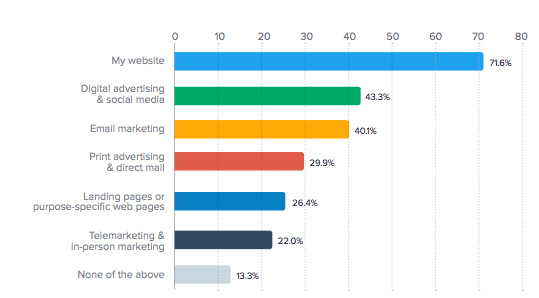If you’re getting involved with SEO or digital marketing for the first time, you may become extremely overwhelmed. Not only are there an abundance of tools and resources available, SEO can get tricky enough at times that even seasoned veterans can run into problems. Toronto’s Green Lotus, however, is looking to change all that.
The company recently launched a set of SEO and social media tools that are specifically meant to help entrepreneurs and small business owners with their SEO activities and improve their search engine rankings. Green Lotus is offering a 30-day free trial, but packages start as low as $8 per month.
If you’re using Google Apps, which is a no-brainer, then you may want to supercharge your account with Grexit. This tool converts your regular Gmail into a powerful collaboration tool to help easily manage your project management workflow. There is a free option and pricing plans start at $5 per month.
Speaking of Gmail, Boomerang is a nifty tool that automates important email follow-ups, such as sales leads or reminders when bills are due. There is a free basic version and plans starting at $4.99 per month.
Email marketing is still important and should be a part of your marketing strategy, which is why you should make the best out of Klaviyo. This tool helps you send out personalized and targeted emails, but it also has features like analytics, autoresponders, subscription management, and real-time segments. It also integrates with the CRM, shopping cart, help desk, and marketing software of your choice. If the free plan isn’t enough, pricing starts at $25.
Since we’re on the topic of email marketing, MailChimp is one of the most popular email marketing tools available. MailChimp allows you to send out targeted emails, subscriber profiles, and automated emails. You can send 12,000 emails to 2,000 subscribers for free.
With Sniply you can post an ad for your business on relevant news stories that you share with a link driving visitors back to your content. If you use under 1,000 clicks per month Sniply is free. Anything more will begin at $29 per month.
Fanplayr uses big data so that you can analyze, segment, and target your audience. With this real-time information you’ll be able to create customized content and offers which will help you increase conversations.
Intercom offers four customer communication packages to help you observe, learn, engage, and provide support. Overall, this is an incredible tool if you want to reach and retain customers. There’s a 30-day free trial, with plans starting at $49 a month.
Hostt is a free w=Web hosting solution that allows you to easily and cheaply host your website for the cost of a domain each year. Total investment = $14 per year. You have the ability to automatically install Wordpress, Joomla, and many other CMS solutions. This is an incredible gem that I found a couple months ago and host several sites on.
SimilarWeb provides competitive insights about a website, as well as the overall digital presence of a company. This includes everything from monthly visits to referring sites to visitor interest. If you purchase one of the Pro versions, which start at $199, you will discover even more.
This SEO management platform used to assist you with your digital marketing campaigns, see which keywords are ranking the highest for you, suggestions for improving your site, and keeping an eye on what your competitors are doing. Packages start at $29 per month.
Keeping your team on the same page is crucial. That’s why tools like
Trello,
Basecamp,
Do, and
Producteev are so popular. While these tools are amazing and beneficial, sometimes you just need a simple communication tool to reflect on what you and your team did for the day and to celebrate accomplishments. IDoneThis accomplishes just that – with plans maxing out at $5 per month.
Another collaboration tool is Rignite, which is ideal for social media campaigns. With Rignite you can monitor multiple social media platforms, schedule posts and have access to campaign reports. While
Hootsuite and
Buffer have been used in the past for monitoring and scheduling, they both don’t include the collaborative features of Rignite. After a 14-day free trial, plans begin at $28 per month.
If you’re looking for a tool to collect and process payments from your customers, then you have to consider Stripe. However, what makes Stripe stand apart from a service like PayPal is that it can handle coupon codes, invoicing, prorating, and refunds. Stripe charges 2.9 percent plus $0.30 per successful charge, or less – based on volume. You should also check out
Recurly if you need a solution for recurring subscription payments.
SumoMe is a powerful tool that will give your site, and business, a major boost. SumoMe has a number of features that include a scroll box for email signups, contact forms, heat maps to see where your visitors are coming from, and a tool that auto-optimizes your share buttons.
Whenever there’s a free tool available to help increase your business, it’s definitely a win-win scenario. WooRank is one of these tools since it performs a free and in-depth SEO audit of your site.
Don’t worry if you don’t understand the data in your Google Analytics reports. Not everyone has the time or technical knowledge to decipher an analytics report. With QuillEngage, however, you are given an easy-digest report with actionable advice to improve your site’s performance.
StreamScience is a great
online marketing tool that assists you with creating, curating, and distributing content that will reach the right audience at the right time, which means that you don’t have to do content marketing all on your own. There’s a free personal plan and a professional plan for $9.99.
There are several tools, such as
Mixpanel, that can help you understand the behavior of your audience – which can be used to improve engagement. However, a cheaper and equally effective is Crazy Egg. This tool provides a heatmap so that you can see where your customers are coming from and what they’re doing on your site. Starter plans begin at $9 per month.
Optimizely can be used to test pages, segment visitors, and track everything from engagement to clicks, conversions, and sign-ups so that you can make actionable decisions. There’s a free Starter Plan if you’re not ready for Enterprise.
In case you didn’t notice, there are a lot of online resources for growing your start-up. The thing is, not all businesses are the same. That’s why a free tool like Ampervize comes in handy. Just answer a couple of questions and you’ll be directed to the
online marketing sources suited best for your start-up.
Looking to boost loyalty and user engagement? Then you have to give PunchTab a try. This software-as-a-service platform gives you the power to reward users for sharing or commenting about your products through customized gifts, gamification, and other socially driven activities.
Nimble has many amazingly useful features that include: contact management, insights, social listening, activity management, and a unified inbox. Overall, Nimble could very well be the most complete CRM available. Pricing is $15 per month per user.
While Squarespace is an outstanding place to showcase your products, LaunchRock is a simpler site builder option that was designed specifically for acquiring customers early on. Use LaunchRock to also validate an idea and generate some interest in your start-up.
One of the best ways to help your start-up grow is by demonstrating your authority. This can be accomplished by creating useful information for your audience. With Guides.co you can create and publish helpful guides to help you and your business get discovered by influencers and your target audience.
Want to know what people think of your website, video, or product? Look no further than UserTesting. This powerful tool is a great way to gain priceless feedback from real people. The Basic plan starts at $49 per month.
Colibri is a great tool to discover influencers in your industry, monitor what people are saying about your brand, and keep track of your competitors. By using this tool you can jump into the right conversations online. The Standard Plan begins at $95 per month. If that’s too much, you may want to look into a company like
Positionly.
Let’s keep this short and sweet. Cyfe has an effective all-in-one dashboard that keeps track all of your businesses activity. You can also customize Cyfe to help your start-up grow the way you see fit. You can sign up for free, but the Premium plan only costs $19 per month ($14 per month if paid annually.)
HiQ Labs makes it easy to predict human behavior online. Using HiQ you can help improve retention rates at your company as well as place people in the best jobs possible. This helps with workplace planning.
Video marketing is a big deal. And it’s only going to get bigger. If you don’t want to come off as an amateur, then you may want to use Wistia to create videos and keep track of who’s been watching them, and for how long they watch. If the Free Plan isn’t enough, there is a Small Business for $25 per month.
With Searchmetrics you can now many data-driven decisions with your content. Because content is the backbone of many companies and being found online, Searchmetrics helps you figure out what keywords and content you should be writing about for top results. Easily compare your content with your competitors’ content.
BuzzSumo can connect you with industry influencers, content discovery, and backlinks. In short, it’s a pretty spectacular tool. If you have the extra funds, BuzzSumo has Pro plans starting at $99 per month.
Oktopost is a social media management tool designed just for B2B marketing. Not only can you schedule posts to Facebook, Twitter, and LinkedIn, you can also measure the results of campaigns by tracking each lead you generate. After a 30-day free trial, plans start at $55.
As mentioned earlier, there are a lot of available
SEO tools. Raven Tools comes equipped with a set of tools for all of your SEO, PPC, content marketing, and social media needs. What makes Raven stand out, though, is that it cuts out time-consuming tasks by generating in-depth, easy-to-understand reports. Packages start at $99 per month, which isn’t bad if you want to add this with something like Google Analytics.
WordPress is a great tool for start-ups. It’s free, easy-to-use, and can be customized to fit your needs. However, to get the most out of WordPress you’ll need to get the Yoast WordPress SEO plugin. This plugin optimizes your WordPress site by providing you with features like a content analysis function and automatically generated XML Sitemap.
An interesting contact manager. Write one note, have it personalized and sent to hundreds of people in seconds. It will sort through contacts and choose to send the note via email vs. Facebook vs LinkedIn vs. text.
If you have to ship physical products via UPS, FedEx, USPS, DHL, OnTrac, and others, they integrate with tons of platforms and make the whole process seamless.
Investor relations for start-ups to help manage, curate, and report on communications to save the entrepreneur time and energy.
For cleaning sales/contact data and prospecting based on vertical/size/geo.
Makes it easy for your team to communicate and engage with one another. Other favorites include
Slack and
Asana.
Social sharing is vital to getting your story out. Shareist lets you capture content URLs, feeds, and ideas, share them immediately on social media, and save them for building and publishing pages to your blog. Or you can find great content using
Zite,
FlipBoard,
Buffer’s Daily App,
Triberr and then use a combination of
Pocket,
Buffer, and IFTTT to enable your social sharing.
When you create your own content, Triberr helps content creators get more shares through superfan activation, employee advocacy, and tribe marketing. Use it to
build a tribe to share your content.
Gives you the power of a platform like Magento without all the server and software maintenance. They have really advanced developer tools to help deliver experiences that are pretty much impossible on ecommerce platforms like WooCommerce, BigCommerce, or Volusion (sister company of Mozu). The price point isn’t low, but if your start-up is making money from e-commerce, stability, support, and speed are totally worth the investment.
Sure, A/B testing is great but after a few experiments you end up serving the exact same experience for all visitors, which is really false by nature. This is where website personalization platforms such as the popular Commerce Sciences kicks in – it enables marketers to significantly drive SaaS or e-commerce sales by serving the right content to the right visitor at the right time. For instance, an e-commerce marketer may target shoppers which added $50 to $90 worth of goods to their cart, with an upsell coupon which could be claimed if they are to add more items and reach $109.
GoAnimate is a simple tool to create your own custom videos that you can share using Wistia for analytics and lead generation.
While we are talking about video. Capture screen recording and edit your videos. This is important for product demos and walkthroughs. Video is so important to marketing today.
If you are raising funds, reaching out to potential clients or trying to do business development, you will want introductions to people. Conspire tells you exactly how to get the best introduction to whoever you want to meet — a customer, employer, or investor.
Want to keep an eye on potential competitors? Here is a Chrome extension that shows you how much traffic a site gets, how much money they raised, what powers their stack, and much more.
One of the most effective digital marketing tactics we have found is remarketing with Google and Facebook. While it seems easy, you want to make sure you set it up properly to maximize your growth potential. Here is a step-by-step guide for start-ups to generate killer lead generation and sales using Facebook and Google in tandem, or they have a service to set it up for you or to train you to do it.
